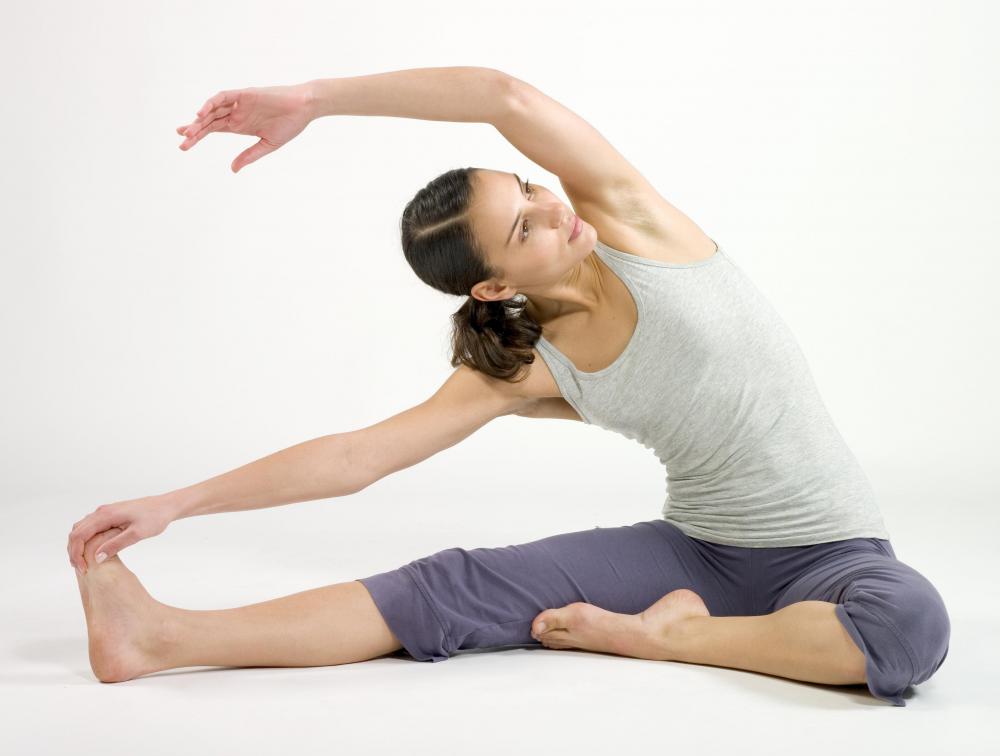At WiseGEEK, we're committed to delivering accurate, trustworthy information. Our expert-authored content is rigorously fact-checked and sourced from credible authorities. Discover how we uphold the highest standards in providing you with reliable knowledge.
What Are the Benefits of Flexibility?
The benefits of flexibility are so vast that it is almost unreasonable how often stretching and flexibility are ignored. Some people genuinely believe that flexibility is only needed for elite athletes or aspiring gymnasts. This could not be further from the truth, as those needing flexibility the most are everyday citizens. Flexibility can help reduce pain, increase mobility, and prevent injuries down the road.
Flexibility is sometimes difficult to define because it can mean so many things. What may be low flexibility to one person could be extremely high flexibility to another. The degree of flexibility, or what makes a person flexible, is therefore a very individual, specific property. That being said, the broad definition of flexibility is the ability to increase distance between joints.

In order to increase the distance between joints, the structures that lie between them must expand. Luckily, the ligaments, tendons, and muscles that fill this void are all elastic elements capable of expansion. The benefits of flexibility allow for an ease of expansion among these structures. This can be useful as all motion is a dynamic process. In order to move, joints, bones, muscles, and other structures must first move, and one of the benefits of flexibility is making these actions occur with less stress and effort required of the body.

The importance of flexibility can best be illustrated by real-life examples. One is a geriatric patient hoping to walk after ankle surgery — the other is an Olympic gymnast. The Olympic gymnast is doing all of the right things, warming up, stretching, and dynamically using all of his or her muscle groups to help flexibility. This individual keeps good habits throughout life and is rarely injured or in pain due to limited flexibility.

The geriatric patient unfortunately was never educated on the benefits of flexibility and has lived a life of limited motion, seldom stretching. This person's joints and associated structures have grown stiff over the years, turning nature's rubber bands into stone. After surgery, instead of participating in physical therapy designed to restore some elasticity, he or she prefers to sit in a chair.

Unfortunately, this patient may never recover and will be lucky to ever walk again. Even more unfortunate is the fact that this example is often true in real life. The benefits of flexibility go far beyond performing at an elite athletic level, and almost everyone can benefit from good habits that promote flexibility. It is important to take steps to reflect the gymnast enjoying a life of locomotive longevity rather than daydream of walking while sitting stiff in a chair.
AS FEATURED ON:
AS FEATURED ON:














Discuss this Article
Post your comments